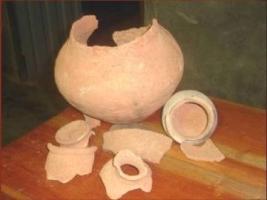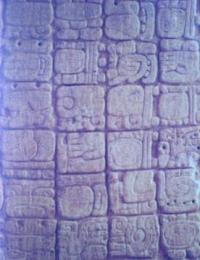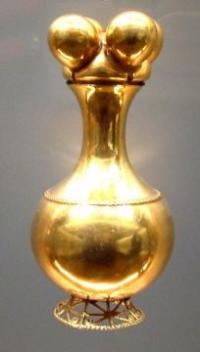Copy Link
Add to Bookmark
Report
Cider Digest #0507

Subject: Cider Digest #507, 12 December 1994
From: cider-request@eklektix.com
Cider Digest #507 12 December 1994
Forum for Discussion of Cider Issues
Dick Dunn, Digest Janitor
Contents:
RE: Cider Digest #506, 8 December 1994 (KLUDGE@AGCB1.LARC.NASA.GOV)
Juice and Sweet Cider ("Chris Cesar")
Send ONLY articles for the digest to cider@eklektix.com.
Use cider-request@eklektix.com for subscribe/unsubscribe/admin requests.
When subscribing, please include your name and a good address in the
message body unless you're sure your mailer generates them.
------------------------------
Subject: RE: Cider Digest #506, 8 December 1994
From: KLUDGE@AGCB1.LARC.NASA.GOV
Date: Fri, 9 Dec 1994 10:33:24 -0500 (EST)
I've seen several recommendations for the NY State Experimental Station,
and let me also recommend Miller's Nursery in Canandaigua. They sell a
large number of apple (and grape) varieties from cuttings provided by
the folks in Geneva, and their prices and minimum orders are much lower.
I currently have three trees from Miller, including a Cox's Orange Pippin
and am pretty much delighted with their services.
Now, if only I could get gooseberry plants to take hold here...
--scott
------------------------------
Subject: Juice and Sweet Cider
From: "Chris Cesar" <Chris_Cesar@qmgate.arc.nasa.gov>
Date: 9 Dec 1994 12:24:32 +0800
Mail*Link(r) SMTP Juice and Sweet Cider
Preservative Free Juice Source.
Jason Landman was asking where he could find preservative free cider. If you
can't find fresh preservative free cider (from a local orchard) I would
recommend a frozen concentrate. I haven't seen any taste test data on apple
juice, but Consumers Reports periodically does reviews on orange juice, and
the frozen concentrates always rate higher than the "fresh" cartons. I
recently started making 10 gallons of cider from apples in my yard and was
looking for a preservative free concentrate. My local Price Club sells "Tree
Top" brand, and the cartons have an 800 number on them. I called the number
and they claim they add no preservatives to their concentrate. I suppose this
means you might want to treat the juice with sulfites before fermenting.
I would not recommend using any bottled preservative free cider, since it
would have to be pasteurized. Pasteurizing cider will change the flavor
somewhat, giving it a "cooked apple" flavor. I suppose some health food
stores might have unpasteurized, preservative free juice, but I bet it cost a
fortune. FWIW, the juice I bought at Price Club cost $1.90/gal.
Sweet sparkling cider.
Recently, someone posted a suggestion to this group that a sweet sparkling
cider could be made by priming with a combination of corn sugar (for
carbonation) and lactose (for sweetness). Lactose (milk sugar) is not
fermentable, and is available at most homebrew stores.
Another suggestion, by the late Dave Line, is to use saccharine for residual
sweetness. It seems to me that if saccharine works, aspartame (Nutrasweet)
would probably work better. I have made my own diet rootbeer by mixing the
concentrate syrups that you can by in the store with nutrasweet, then adding
corn sugar for priming, some leftover beer yeast, and bottling. The Nutrasweet
did not seem to inhibit the second fermentation in any way.
Martinelli's sparkling cider is made by force carbonating, bottling, and then
pasteurizing the bottled cider. This would work for fermented cider, but I
would recommend that you fine the cider till it is crystal clear, then force
carbonate in a keg. A second fermentation in the bottle would leave a yeast
sediment in the bottle that would probably adversely affect the flavor if
heated.
Another method that would work would be to carbonate by priming and bottling,
then chill the bottles to near freezing, uncap, add a measure dosage of
sugarwater and preservative (sulfite or sorbate) nad recap.
The cleanest, and most difficult, method I can think of is to do what fine
champagne makers do. Prime and bottle the cider in champagne bottles, then
let bottles age for about a year upside down. Vibrate or riddle the bottles
to get all of the sediment to collect in the neck. Freeze the neck in a brine
solution, and uncap. The ice plug will be ejected by the high bottle
pressure. The last step is to add a measured amount of sugar-water, top off
with cider from another bottle and recap. I don't know of anyone who has
actually done this, but I have toured the Korbel Champagne Cellars several
times and watched it. The guide claims that after a year in the bottle, any
yeast left are dead or deeply dormant. All of Korbel's champagnes have some
sugar added in this way (Even the extra dry) Seems like a lot of work for
some sparkling cider.
I personally am going to try the both the lactose method and the Nutrasweet
method this year. The others seem like too much work. Of course the simplest
method is to use a yeast that doesn't attenuate well (like some ale yeasts).
My experience with this is that cider still finishes quite dry, but not as
harsh as would happen with a champagne yeast.
Hope these tidbits help someone
Chris Cesar
------------------------------
End of Cider Digest #507
























